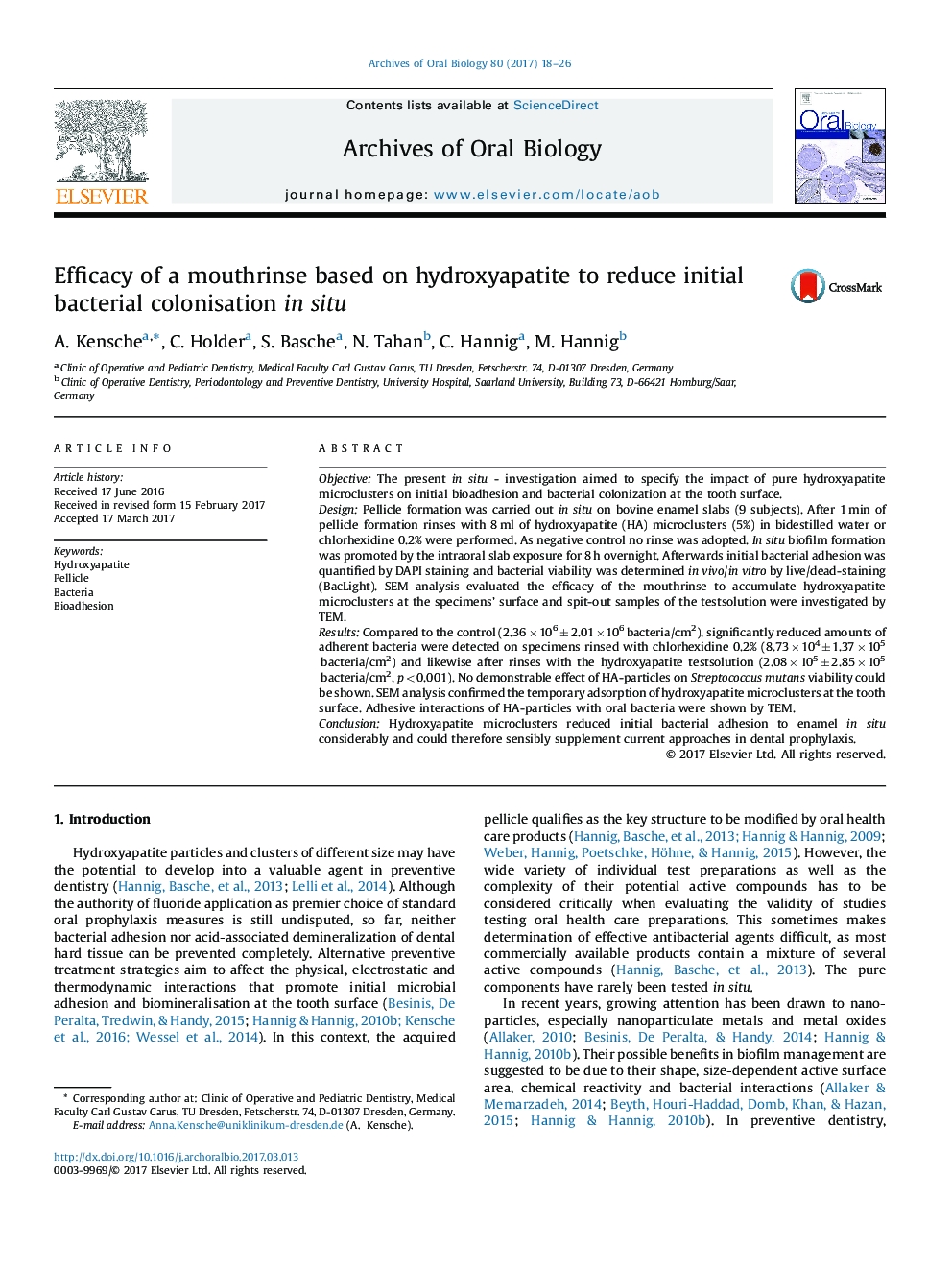| کد مقاله | کد نشریه | سال انتشار | مقاله انگلیسی | نسخه تمام متن |
|---|---|---|---|---|
| 5638014 | 1583273 | 2017 | 9 صفحه PDF | دانلود رایگان |
- Hydroxyapatite particles are proposed to prevent biofilm formation in situ.
- The effect is rather antiadhesive than antibacterial.
- Hydroxyapatite particles accumulate at the tooth surface in situ.
- The substantivity of this accumulation is limited.
- Hydroxyapatite particles accumulate around bacteria contained in saliva.
ObjectiveThe present in situ - investigation aimed to specify the impact of pure hydroxyapatite microclusters on initial bioadhesion and bacterial colonization at the tooth surface.DesignPellicle formation was carried out in situ on bovine enamel slabs (9 subjects). After 1 min of pellicle formation rinses with 8 ml of hydroxyapatite (HA) microclusters (5%) in bidestilled water or chlorhexidine 0.2% were performed. As negative control no rinse was adopted. In situ biofilm formation was promoted by the intraoral slab exposure for 8 h overnight. Afterwards initial bacterial adhesion was quantified by DAPI staining and bacterial viability was determined in vivo/in vitro by live/dead-staining (BacLight). SEM analysis evaluated the efficacy of the mouthrinse to accumulate hydroxyapatite microclusters at the specimens' surface and spit-out samples of the testsolution were investigated by TEM.ResultsCompared to the control (2.36 Ã 106 ± 2.01 Ã 106 bacteria/cm2), significantly reduced amounts of adherent bacteria were detected on specimens rinsed with chlorhexidine 0.2% (8.73 Ã 104 ± 1.37 Ã 105 bacteria/cm2) and likewise after rinses with the hydroxyapatite testsolution (2.08 Ã 105 ± 2.85 Ã 105 bacteria/cm2, p < 0.001). No demonstrable effect of HA-particles on Streptococcus mutans viability could be shown. SEM analysis confirmed the temporary adsorption of hydroxyapatite microclusters at the tooth surface. Adhesive interactions of HA-particles with oral bacteria were shown by TEM.ConclusionHydroxyapatite microclusters reduced initial bacterial adhesion to enamel in situ considerably and could therefore sensibly supplement current approaches in dental prophylaxis.
Journal: Archives of Oral Biology - Volume 80, August 2017, Pages 18-26
